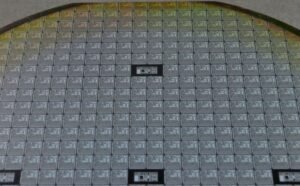Deepfake and Morphing: Difference
Deepfake and morphing are two concepts that have gained significant attention in recent years due to their implications in the digital realm. While both involve manipulating visual content, there are distinct differences between the two techniques. In this article, we will explore the characteristics and unique features of deepfakes and morphing, aiming to shed light on their distinctions and raise awareness about the potential risks they pose.
Key Takeaways:
- Deepfakes and morphing are techniques used to manipulate visual content.
- Deepfakes use AI and machine learning algorithms to create realistic synthetic media.
- Morphing involves blending and transforming two or more images to create a seamless transition.
- Deepfakes are known for their potential to spread misinformation and perpetuate online harassment.
- Morphing is commonly used in the entertainment industry for special effects and enhancing visual storytelling.
Understanding Deepfakes
Deepfakes are a type of synthetic media that involve the use of AI and machine learning algorithms to create hyper-realistic content. They can involve face swaps, voice imitations, and even entire video reenactments. *Deepfakes have gained notoriety for their potential negative impact on society, as they can be used to deceive and spread disinformation by manipulating recognizable personalities or creating entirely fabricated scenarios.* Deepfakes have raised concerns about privacy, cybersecurity, and the erosion of trust in digital media.
Understanding Morphing
Morphing, on the other hand, is a technique that involves blending and transforming two or more images or video frames to create a smooth transition between them. It is commonly used in the entertainment industry for special effects and enhancing visual storytelling. *Morphing allows for seamless transformations between images, making it a valuable tool for creative expression and artistic purposes.* It can be used to create fantastical creatures, age progression, or even to illustrate the evolution of a concept.
Comparison between Deepfakes and Morphing
| Deepfakes | Morphing | |
|---|---|---|
| Definition | AI-generated media that replaces or superimposes existing content with fabricated content. | A technique that blends and transforms images or video frames to create seamless transitions. |
| Application | Often used for impersonation, deception, and spreading disinformation. | Commonly used in the entertainment industry for special effects and storytelling. |
Both deepfakes and morphing involve manipulating visual content, but they differ in their purpose and application. While deepfakes have gained notoriety for their potential to spread misinformation and perpetuate online harassment, morphing finds its place predominantly in the creative realm, where it is used to enhance visual storytelling and create awe-inspiring effects.
Risks and Ethical Considerations
- Deepfake technology poses a significant risk to privacy and security, as it can be used maliciously to manipulate or impersonate individuals.
- Morphing, when used irresponsibly, can lead to ethical concerns, such as the unauthorized manipulation of a person’s likeness.
- The misuse of deepfakes can have severe consequences, including reputation damage and the spread of false information.
- Proper regulation and awareness are crucial in mitigating the risks associated with both deepfakes and morphing.
Conclusion
Understanding the differences between deepfakes and morphing is vital in recognizing the potential risks and benefits of these techniques. While deepfakes have become synonymous with the spread of misinformation and online harassment, morphing provides a creative outlet for enhancing visual content and storytelling. As technology continues to evolve, it is essential to remain vigilant and informed to navigate the potential risks and ethical considerations that arise from these advancements.

Common Misconceptions
Deepfake and Morphing are the same thing
One common misconception about deepfake and morphing is that these terms are interchangeable and refer to the same thing. While both techniques involve manipulations of digital media, they are different in their approach and capabilities.
- Deepfake involves the use of artificial intelligence and deep learning algorithms to create realistic fake videos.
- Morphing, on the other hand, is a technique that morphs or blends images or videos together to create a seamless transition between them.
- Deepfake can manipulate facial expressions, movements, and even voice to make someone appear like they are saying or doing something they never did.
Deepfake and Morphing are always used for malicious purposes
Another common misconception is that deepfake and morphing techniques are always used for nefarious purposes, such as spreading disinformation or creating explicit content without consent. While these concerns are valid, it is important to recognize that there are also legitimate and ethical applications of these technologies.
- Deepfake technology can be used for entertainment purposes, such as in movies or television shows to recreate historical figures or bring deceased actors back to the screen.
- Morphing techniques are often used in animation and special effects to create seamless transformations or transitions between scenes.
- Researchers and scientists also utilize these techniques for academic purposes, such as studying human perception and computer vision.
Deepfake and Morphing are undetectable
Many people believe that it is impossible to detect deepfakes or morphed media. While it is true that these manipulations can be incredibly convincing, there are methods and technologies being developed to detect and mitigate their impact.
- Researchers are working on algorithms that analyze subtle inconsistencies in the media, such as irregularities in facial movements or unnatural eye reflections.
- Techniques like reverse image searching and metadata analysis can also be used to identify manipulated or duplicated images and videos.
- Collaborative efforts between technology companies, researchers, and governments aim to develop standardized methods for deepfake detection.
Deepfake and Morphing are only a recent phenomenon
It is commonly assumed that deepfake and morphing techniques are relatively new developments in the digital age. However, this is not entirely accurate, as the concept of digital manipulation has been around for quite some time.
- Early forms of image manipulation can be traced back to the 19th century, with techniques like composite photography and airbrushing.
- Advancements in digital imaging and graphics software in the late 20th century paved the way for more sophisticated manipulations.
- Deepfake technology, fueled by recent advancements in artificial intelligence, has popularized the notion of digitally manipulated media.
Deepfake and Morphing are always harmful and dangerous
While there are real concerns about the potential misuse of deepfake and morphing techniques, it is important to avoid painting these technologies with a broad brush and assuming they are always harmful and dangerous.
- When used responsibly, deepfake and morphing technologies can serve as valuable tools for creative expression and artistic exploration.
- By raising awareness and developing robust detection techniques, we can minimize the harmful impact of malicious deepfakes.
- Education and media literacy play crucial roles in helping individuals recognize and critically evaluate the authenticity of digital content.

Table: The Evolution of Deepfake Technology
In recent years, deepfake technology has advanced rapidly, allowing for the creation of highly realistic, yet entirely fabricated, audiovisual content. This table showcases the evolution of deepfake technology from its early stages to the present day.
| Year | Technology | Capability |
|---|---|---|
| 2014 | Early Deep Learning | Basic Face Swapping |
| 2016 | Generative Adversarial Networks (GANs) | Improved Realism |
| 2018 | Speech Synthesis | Simulated Voice |
| 2019 | Partial Body Manipulation | Altered Gestures |
| 2020 | Multiple Image Sources | Merged Facial Features |
Table: Key Differences between Deepfakes and Morphing
While often used interchangeably, deepfakes and morphing are distinct techniques with different characteristics. This table highlights the key differences between these two methods of manipulating visual content.
| Difference | Deepfakes | Morphing |
|---|---|---|
| Definition | AI-based technique that swaps faces or alters speech | Seamlessly blends multiple images to create a hybrid |
| Input | Singular source content | Multiple source images |
| Realism | Highly realistic, often indistinguishable | May exhibit noticeable artifacts or distortions |
| Manipulation | Primarily face and voice | Can alter any visual element (face, body, background) |
| Intention | Usually used for entertainment or malicious purposes | Commonly used for creative expression or artistic endeavors |
Table: Deepfake and Morphing Detection Techniques
As deepfakes and morphing pose significant challenges, various techniques have been developed to detect and mitigate these manipulated visuals. This table presents different approaches used to identify deepfakes and morphed media content.
| Technique | Deepfake Detection | Morphing Detection |
|---|---|---|
| Forensic Analysis | Examines inconsistencies in pixel patterns | Analyzes merging artifacts or discrepancy in contours |
| Biometric Verification | Compares facial landmarks to the original subject | Validates morphed areas by comparing against genuine samples |
| AI-based Algorithms | Utilizes machine learning to identify patterns in manipulated frames | Employs deep neural networks to distinguish morphed elements |
| Metadata Analysis | Scrutinizes timestamps, GPS coordinates, or device information | Checks the presence of metadata inconsistencies |
| Micro-Expressions Recognition | Detects subtle facial expressions that are hard to fabricate | Examines inconsistencies in facial expressions and muscle movements |
Table: Impact of Deepfakes and Morphing
The emergence of deepfakes and morphing technologies has far-reaching implications, affecting various aspects of society, technology, and communication. This table outlines the potential impact of these manipulated visual techniques.
| Impact | Deepfakes | Morphing |
|---|---|---|
| Political Landscape | Can deceive voters with forged political speeches | Alters historical images leading to misinformation |
| Legal Frameworks | Raises concerns regarding privacy and consent | Challenges the authentication of digital evidence |
| Cybersecurity | Facilitates sophisticated phishing attacks and social engineering | Enhances disguising techniques for cybercriminals |
| Media Verification | Undermines trust in visual media and journalism | Complicates the validation of images in press and media |
| Entertainment Industry | Unleashes new possibilities in filmmaking and special effects | Enables creative expression through hybrid imagery |
Table: Deepfake and Morphing Legislative Response
The rise of deepfakes and morphing has prompted lawmakers across the globe to address the challenges posed by these manipulated visuals. This table illustrates some significant legislative responses and initiatives aimed at mitigating the risks associated with deepfakes and morphing.
| Legislation | Country | Objective |
|---|---|---|
| SHIELD Act | United States | Prevent the spread of election-related deepfakes |
| Digital Services Act | European Union | Enhance online platforms’ accountability in removing deepfakes |
| Misuse of Deepfake and Morphed Content Regulations | India | Combat the dissemination of unethical and malicious deepfakes |
| Deepfake Regulations Study | South Korea | Evaluate potential legislation for controlling deepfake practices |
Table: Deepfake and Morphing Detection Tools
Complementing the detection techniques, several tools have been developed to aid in identifying deepfakes and morphed content. This table presents some popular detection tools widely used by researchers and organizations.
| Tool | Features | Availability |
|---|---|---|
| DeepFaceLab | High-quality deepfake detection and analysis | Open source |
| FaceForensics++ | Detects face manipulation in both images and videos | Free download |
| Celeb-DF Dataset | Large-scale dataset for evaluating deepfake detection models | Publicly available |
| Detecting Photoshopped Faces by Scripting Photoshop (DFD-P) | Identifies facial retouching using Photoshop scripts | Open source |
Table: The Ethics of Deepfakes and Morphing
Deepfakes and morphing techniques raise several ethical concerns that impact various domains of society. This table sheds light on the ethical implications stemming from the use of these AI-driven visual manipulations.
| Ethical Concern | Deepfakes | Morphing |
|---|---|---|
| Consent | May require consent for using someone’s likeness | Raises issues of consent when using multiple source images |
| Identity Theft | Can falsely attribute actions or statements to an unsuspecting person | Potentially alters the visual representation of an individual |
| Reputation Management | Can damage reputations through the creation of offensive or false content | May manipulate images or videos to damage an individual’s reputation |
| Authenticity | Challenges the trustworthiness of digital media | Raises questions regarding the portrayal of historical events |
| Privacy | Can violate an individual’s privacy by creating fabricated intimate content | Raises concerns when combining elements from different sources |
Table: Major Deepfake and Morphing Incidents
Deepfakes and morphing have sparked controversy with several high-profile incidents globally. This table presents notable occurrences where these manipulated visuals have caused significant repercussions.
| Incident | Date | Details |
|---|---|---|
| Obama Deepfake | April 2018 | A deepfake of Barack Obama voiced by Jordan Peele went viral, raising concerns about its potential to spread disinformation. |
| WhatsApp Lynching Videos | June 2018 | Fake morphed videos circulated on WhatsApp in India, contributing to mob violence and leading to multiple deaths. |
| Political Deepfake Manipulation | March 2020 | A deepfake video of a Belgian politician manipulated to appear intoxicated was shared on social media, impacting their reputation. |
| DeepNude App | June 2019 | An app called DeepNude was released, allowing users to create nude images of women using AI-generated body parts, sparking public outcry. |
As deepfake and morphing technologies continue to advance, it becomes increasingly essential to understand their implications and develop robust methods for detection and prevention. The ethical concerns surrounding consent, privacy, and authenticity must be addressed collectively by policymakers, technology developers, and society as a whole. By raising awareness and fostering responsible use, we can navigate the complex landscape and foster a trusted digital environment.
Frequently Asked Questions
Deepfake and Morphing: Difference
Question: What is a deepfake?
A deepfake refers to the technique of using artificial intelligence (AI) to superimpose or manipulate one person’s image or voice onto another person’s video or audio content, creating a realistic but synthetic representation.
Question: How does deepfake technology work?
Deepfake technology utilizes machine learning algorithms and neural networks to analyze and process large amounts of data, enabling the software to understand and replicate various characteristics such as visual appearance, speech patterns, and facial expressions.
Question: What is morphing?
Morphing is a technique used to create a smooth transition between two or more images or videos by blending their features. It is typically employed to create animations or special effects in movies, but it can also be misused to alter individuals’ identities.
Question: What is the main difference between deepfake and morphing?
The fundamental difference between deepfake and morphing lies in their underlying technology and purpose. Deepfake involves AI algorithms and is primarily used for face-swapping to create convincing and deceptive content. Morphing, on the other hand, is a visual effect technique used to smoothly transition between different images or videos.
Question: Are all deepfakes created using morphing techniques?
No, not all deepfakes are produced using morphing techniques. While it is possible to use morphing elements in deepfake creation, deepfakes often involve more advanced AI algorithms that analyze and utilize a vast collection of data, allowing for a more accurate and consistent replication of a person’s appearance and behavior.
Question: Is morphing considered a form of deepfake?
Morphing itself is not considered a form of deepfake. While morphing can be used as a component in creating deepfakes, morphing generally refers to a technique for blending or transitioning between images or videos, whereas deepfake specifically involves the use of AI technology to manipulate and generate synthetic content.
Question: Can deepfakes and morphing be used for malicious purposes?
Yes, both deepfakes and morphing techniques can be misused for malicious purposes. Deepfakes have been employed to spread misinformation, defame individuals, create fake news, or even generate explicit content without consent. Similarly, morphing techniques can be used to manipulate images or videos for deception, identity theft, or other harmful intentions.
Question: How can deepfake and morphing content be identified or detected?
As deepfake and morphing technologies advance, identifying manipulated content becomes more challenging. However, there are various methods being developed such as forensic analysis, digital watermarking, and deep learning algorithms that aim to detect inconsistencies, artifacts, or anomalies in the video or audio that might indicate the presence of a deepfake or morphed content.
Question: Are there any legal implications regarding deepfakes and morphing?
There are legal implications associated with the creation and distribution of deepfakes and morphed content, especially when it involves violating privacy, copyright, or defamation laws. Different countries have their own regulations, and the usage of such technology for malicious purposes can lead to criminal charges or civil lawsuits.
Question: How can individuals protect themselves from the negative effects of deepfakes and morphing?
To protect themselves from the negative effects of deepfakes and morphing, individuals should maintain awareness about the existence and potential risks associated with such manipulations. Being cautious when consuming or sharing online multimedia content, verifying the authenticity of the source, and staying informed about emerging detection technologies are important steps to mitigate the impact of deepfakes and morphing.




